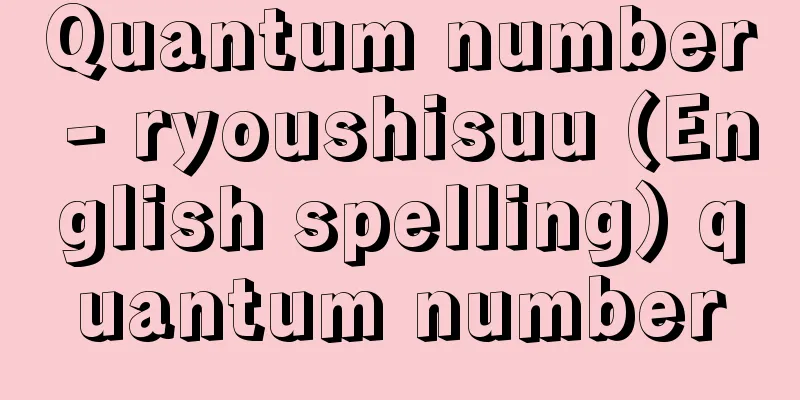Quantum number - ryoushisuu (English spelling) quantum number

|
In quantum mechanics, physical quantities often have discrete values rather than continuous values. In these cases, the values of the physical quantities can be expressed using integers or half integers (an integer plus 1/2). In general, the integers or half integers that distinguish the values of physical quantities are called quantum numbers. Since the state of a mechanical system can be distinguished by the value of its physical quantities, quantum numbers are used to represent the quantum state of a mechanical system. The motion of an electron in a hydrogen atom can be divided into radial motion and rotational motion. When an electron is treated non-relativistically, its energy has a value (- e 2 /2 a 0 )( 1 / n 2 ) ( a 0 is the Bohr radius ) that is inversely proportional to the square of the number n , which is determined by the number of ripples in the state function representing the radial motion and the angular momentum l (see ). n is called the principal quantum number. The magnitude of the angular momentum associated with rotational motion is [Hajime Tanaka] [References] | | | |©Shogakukan "> State function representing radial motion (Figure) Source: Shogakukan Encyclopedia Nipponica About Encyclopedia Nipponica Information | Legend |
|
量子力学では物理量が連続的な値をとらずとびとびの値をとることが多い。この場合、物理量の値を整数または半整数(整数に1/2を加えた数)を用いて表すことができる。一般に物理量の値を区別する整数または半整数を量子数という。 力学系の状態はその物理量の値で区別することができるので、量子数は力学系の量子的状態を表すのに用いられる。水素原子内電子の運動は、その動径方向の運動と回転運動とに分けることができる。電子を非相対論的に扱うと、そのエネルギーは、動径方向の運動を表す状態関数の波打つ数と角運動量lとで決まる数nの2乗に反比例した値(-e2/2a0)(1/n2)(a0はボーア半径)をもつ(参照)。nを主量子数という。また回転運動に伴う角運動量の大きさは [田中 一] [参照項目] | | | |©Shogakukan"> 動径方向の運動を表す状態関数〔図〕 出典 小学館 日本大百科全書(ニッポニカ)日本大百科全書(ニッポニカ)について 情報 | 凡例 |
<<: Paper decoration - Ryōshisōshoku
Recommend
《L'Esprit Nouveau》 (English notation) LEsprit Nouveau
…He started out as a Cubist, but was not satisfie...
Thorn - Thorn
In plants, needles are a general term for hard, wo...
cow in the morning - cow in the morning
...Also called cysticercus or cysticercus. It is ...
Kline, F.
...Originally, it was derived from Pollock, who w...
Texaco [company] - Texaco
One of the world's largest oil companies. Texa...
Terumi Kineya - Introduction to Kineya
…He formally inherited the right of head of the O...
Linyi
A city in southern Shandong Province, China. Popul...
catsup
...A type of sauce made by adding various seasoni...
"The quattro stadiums" (English spelling)
…[Kouzo Hattori]. … *Some of the terminology that...
Butter - Butter (English spelling)
The fat in milk is separated and collected by phy...
Pontus Mountains
A general term for the folded mountain range that ...
"Itako Jinku" - Itako Jinku
...In June, when the Japanese irises bloom, there...
Gastrocolic reflex
…The movement of the digestive muscles is regulat...
Fundamental vibration
When a string is fixed at both ends, many normal ...
Itsubo Tatsuryo Wahen
...The content of the agreement was that 25 annua...









